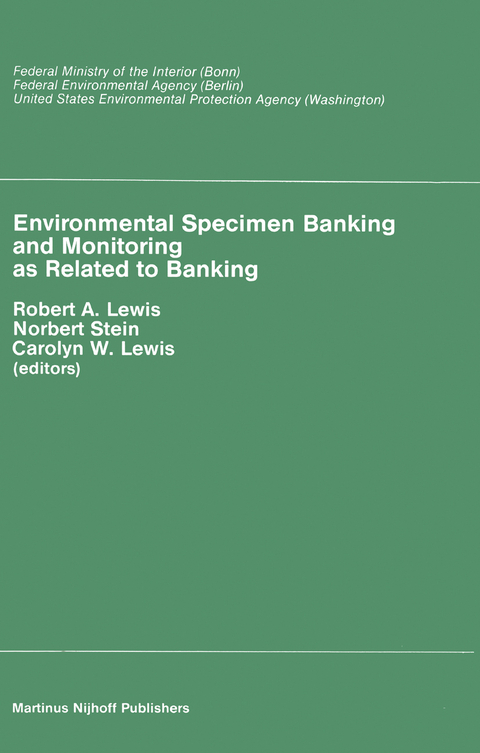
Environmental Specimen Banking and Monitoring as Related to Banking
Kluwer Academic Publishers (Verlag)
978-0-89838-621-9 (ISBN)
Summary of Conclusions and Recommendations.- Welcoming Address of Paul Müller.- Welcoming Address of Wolfgang Knies.- Welcoming Address of George M. Goldstein.- Opening Address: Task and Possibilities of a Specimen Bank.- Section A: Realization of Specimen Banking.- Summary and Conclusions of Section A.- Papers Contributed for Section A:.- Relationship between an international environmental specimen monitoring programme and the implementation of a prevention policy concerning environmental pollution.- The state of the art of the researches on environmental specimen banking in Japan.- Collecting and archiving wildlife specimen in Canada.- General aspects of monitoring and banking of human biological specimens.- Environmental specimen banking in the UK; do we need to go any further?.- Realization of specimen banking: chemical approaches.- Specimen banks and the monitoring of surface water pollution by aquatic organisms.- Concept and operational experiences of the pilot environmental specimen bank program in the Federal Republic of Germany.- Operation of the U.S. pilot national environmental specimen bank program.- Section B: Specimen Selection.- Summary and Conclusions of Section B.- Papers Contributed for Section B:.- The importance of specimen banking to monitoring the St. Lawrence Great Lakes.- Regionally representative sampling.- Experimental bio-monitoring, food web monitoring and specimen banking.- Criteria for the selection of soils for the environmental specimen bank.- Recommendations for specimen banking and monitoring accumulations of air pollutants by plants.- The environmental monitoring of “emergent properties” as related to specimen banking.- Section C: Characterization of Samples and Priorities to be Analyzed.- Summary and Conclusions of Section C.-Papers Contributed for Section C:.- Analytical aspects of the characterization and monitoring of banked samples with special reference to organohalogenes.- Analytical aspects of monitoring diethylstilbestrol and related anabolic compounds in stored samples of different origin.- Analysis of aromatic amines, organochlorine compounds and “dioxin” in biological samples.- Reference materials of the European Community.- Polycyclic aromatic hydrocarbons and azaarenes in environmental specimens.- Analysis of polychlorinated dibenzo-p-dioxins and dibenzofurans.- Analysis of human liver specimens in the U.S. pilot national environmental specimen bank program.- List of Participants and Contributors.
| Erscheint lt. Verlag | 31.12.1983 |
|---|---|
| Zusatzinfo | XII, 358 p. |
| Verlagsort | Dordrecht |
| Sprache | englisch |
| Maße | 156 x 234 mm |
| Themenwelt | Medizin / Pharmazie ► Medizinische Fachgebiete ► Pharmakologie / Pharmakotherapie |
| Medizin / Pharmazie ► Pharmazie | |
| Studium ► 2. Studienabschnitt (Klinik) ► Pharmakologie / Toxikologie | |
| Studium ► Querschnittsbereiche ► Prävention / Gesundheitsförderung | |
| ISBN-10 | 0-89838-621-7 / 0898386217 |
| ISBN-13 | 978-0-89838-621-9 / 9780898386219 |
| Zustand | Neuware |
| Haben Sie eine Frage zum Produkt? |
aus dem Bereich


